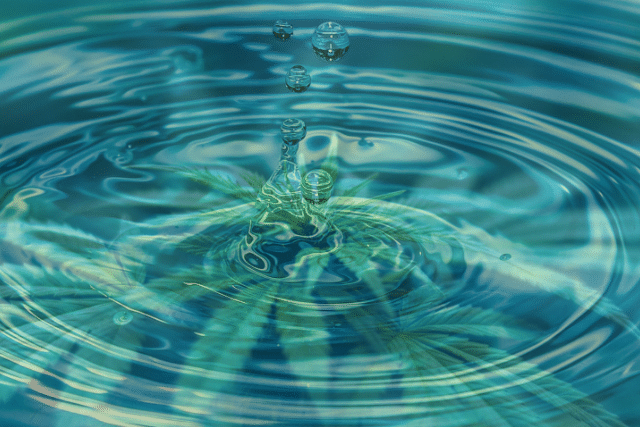Cannabidiol (CBD)-infused beverages are becoming more popular than ever. When feeling better is as easy as having a glass of your favorite drink, it’s hard to resist the accessibility of CBD beverages. However, this market is beginning to realize just how difficult it is to craft the perfect drink using fat-soluble (lipophilic) cannabinoids.
Fat-soluble cannabinoids can only be dissolved in fats. This means that the ingredients within CBD beverages may not be as integrated as they should be. One cannabis biotech company explains the process by comparing CBD and beverages to oil and water: they simply don’t mix. Luckily, folks are finding ways to make the cannabinoid more easily infused into drinks.
Why Water-Soluble Cannabinoids would be Better for CBD Beverages
Many CBD-infused beverages are made with unaltered, fat-soluble cannabinoids. Because of this, you’ll find that your drink may need to be consistently shaken; otherwise, unappealing separation occurs.
Water-soluble cannabinoids, however, could be added to practically any beverage without issue. Not only would this make the drink more uniform and appetizing overall, but water-soluble CBD would also result in a shorter onset time when it pertains to its physiological effects. Instead of having to travel to your liver to be further broken down, the CBD could easily be absorbed within just a few minutes, causing a quicker onset of calming, relieving effects.
How to Make Cannabinoids Water-Soluble
So, how do we do this? Companies have begun to experiment with their own ways of making cannabinoids water-soluble, though many turn to nanotechnology to accomplish this.
Nanotechnology utilizes sound waves to break CBD into even smaller particles. These minuscule particles can then be transferred by nanocarriers (such as liposomes) that protect the CBD while attracting towards water. [1] Such formulations may more easily dissolve and mix into water-based substances. However, others aren’t so sure about this method.
Some believe that not enough information is understood about the effects of nanotechnology and its interactions within our bodies. Because of this, some businesses utilize glycosylation to create water-soluble cannabinoids. Glycosylation means adding a sugar molecule to the cannabinoid to increase its water-solubility. Our bodies naturally detoxify particles by attaching sugar molecules to them, and when this happens with cannabinoids, they become water-soluble. [2]
Scientists at Trait Biosciences found a way to have these sugar molecules already attached to cannabinoids when cultivating the cannabis plant, shortening this conversion process significantly. Not only has glycosylation proven to be non-toxic for plants and people, but it’s also said to produce more cannabinoids than traditionally grown cannabis plants. [3] It’s a win for everybody.
References
- Bruni N, et al. “Cannabinoid Delivery Systems for Pain and Inflammation Treatment.” Molecules, vol.23, no.10, 2018, pp.2478. Journal Impact Factor = 3.060. Times Cited = 14 (ResearchGate)
- Hardman JE, et al. “Cannabinoid Glycosides: In Vitro Production of a New Class of Cannabinoids with Improved Physicochemical Properties.” BioRxiv [preprint], 2017, https://doi.org/10.1101/104349.
- Levy, R. “The Future of Cannabis Production is in the Plant Itself,” Terpenes & Testing Magazine, July-August 2019.
Image Credit: CBD Oil Review











